COVID-19 in Hungary: a record number of second jabs on Wednesday

The number of new cases matches the rolling average of the past seven days, indicating that while the pandemic is receding, it is not gone yet.

The 396 positive results came from 14,459 tests. The 2.7% positivity rate also shows that the pandemic is under control and is receding.
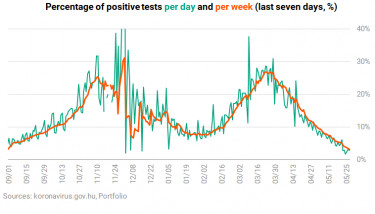
Here are a few more charts on Hungary's testing practices. The number of tests remains low, while the number of active cases keeps dropping and the number of COVID-19 patients registered as recovered keeps rising (presumably as GPs are catching up with their paperwork).
The charts below show that the fewer tests authorities perform, the higher the number of recovered people goes and the lower the number of active cases goes.
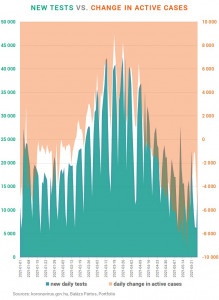
The overlap on the first chart starting in end-March, early April (the number of active cases dropping and the number of recovered people going up) was caused mainly by GPs registering people with COVID-19 as recovered. Also, the higher the number of COVID-19 go, the more overlapping these ’ridges’ will become, because they are no longer in the log of active cases but they are (obviously) not in recovered status either.
And here's the same with 7-day rolling averages.
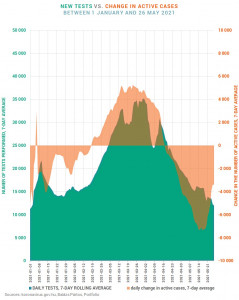
The following two charts show the same set of figures, only the yellow area on the one on the right, depicting the number of people that recovered from COVID-19, is from top to bottom.
The trend on the right-hand chart is clear: the more tests they perform (blue), the lower the number of recoveries go (yellow). The same phenomenon can be seen on the first chart, by the way, only in the form of ‘ridges’ running parallel with each other up to April. Then there’s a sharp divergence. One of the ridges becomes a precipice, the other turns into a steeply ascending cliff.
The daily change in the number of recoveries has been dropping since 17 May.

This abrupt change is shown on the third chart by the yellow line skyrocketing to over 58% from 5% over less than 1.5 months. Our hypothesis is that most of the daily tests are done on samples taken from people waiting to be discharged from hospitals, while authorities are also trying to perform as few tests as possible, i.e. only those that show severe symptoms get tested for COVID-19. There was a sharp drop in the index showing the 7-day rolling average of recoveries/daily tests on 21 May which does not bode well for the future.
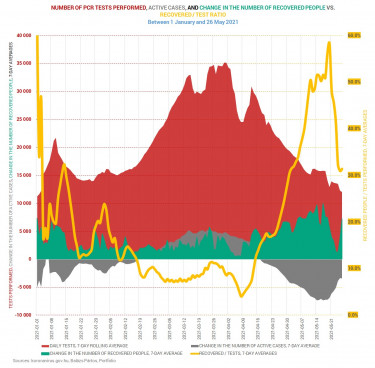
The number of people in hospital and on ventilator decreased by 158 and 12 in a day, respectively, and the number of patients in severe condition is now back to October levels.
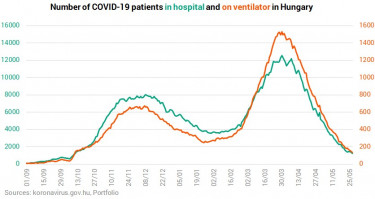
The following charts speak louder, though.
Over the past two weeks, the number of people with coronavirus infection in Hungarian hospitals more than halved, and so did the number of those requiring mechanical ventilation. This is shown on the left-hand chart below. It also shows there are about a quarter as many COVID-19 patients in hospital and on ventilators as on 1 May.
The right-hand chart, however, shows that while only 1.3% of active cases are in hospital, as opposed to 2.2% on 1 May and as high as 6.5-6.7% in March.
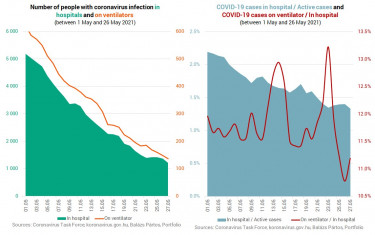
However, about 11% of COVID-19 patients in hospitals require mechanical ventilation. The index has been steadily around 12% for a while now and while there are now slightly more than 1,200 people with coronavirus infection in hospitals and this ratio is largely the same when there were over 12,000!

In further good news, the number of daily fatalities is also decreasing. Yesterday’s 32 victims increased the death toll to 29,654.
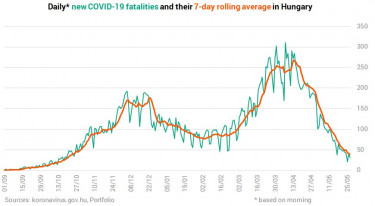
Hungary’s vaccination drive is continuing, with 16,040 people receiving their first jab yesterday, one of the lowest daily numbers in recent weeks, increasing uptake to 5,056,262, while
the second dose was administered to 131,443 people yesterday, a record high.
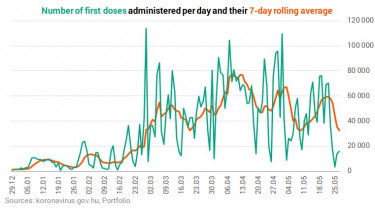
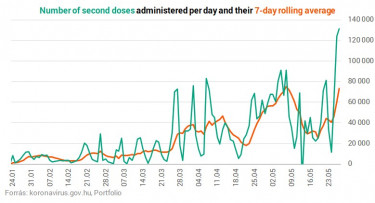
The graph below shows that the number of second jabs is increasing at a fast pace, partly owing to late April’s vaccination campaign and the number of Pfizer vaccines dispensed then (which has a 28-day cycle).

Vaccination coverage in Hungary is now 51.8, while the 3,328,047 second jabs translate to 34.1% of the population.
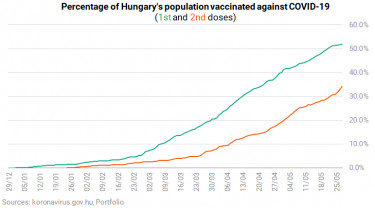
Cover photo: Getty Images








